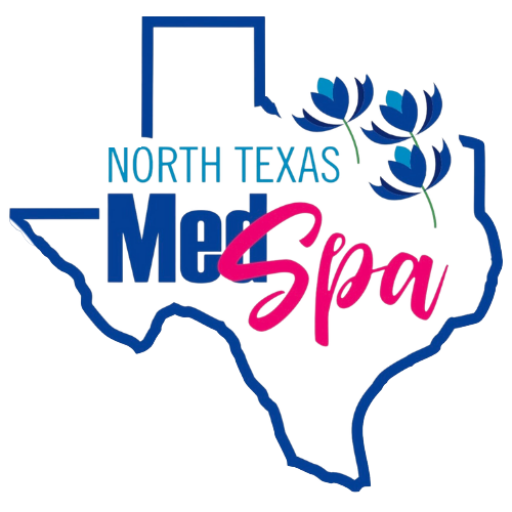Facial exfoliation is a crucial part of any skincare routine. It provides numerous benefits that most of us need. Yet, many of us forget to do it consistently, don’t do it effectively, or even worse, don’t do it safely.
When done correctly, exfoliating your face can help you achieve a smoother, brighter complexion and improve the overall health of your skin. However, if done improperly, it can lead to many unwanted skin problems, which you definitely don’t want to experience on your face.
So, let’s explore the benefits of face exfoliation, different methods, how to do it safely, and how to care for your skin afterward to ensure the best results.
The Benefits of Face Exfoliation
Practically everybody should exfoliate! Well, everybody but those who can’t due to skin conditions or recent facial treatments. But when your skin isn’t vulnerable or compromised, facial exfoliation provides numerous benefits for all ages, genders, and skin types.
First, it removes the dead skin cells. While our skin naturally sheds them, they don’t always slough off as quickly as they should. Since many of us apply serums, lotions, and other products to our faces, natural sloughing is less efficient. When these dead skin cells accumulate, they can clog pores, lead to dull skin, and cause breakouts.
Exfoliation helps to remove them more thoroughly to reveal fresher, healthier skin.
It also keeps skin cleaner by removing excess oils and other debris that can clog pores. Not only will cleaner pores not be as visible, but it will also reduce acne and blackhead breakouts.
Even better, exfoliating regularly also improves skin texture and tone. Encouraging cellular turnover can also reduce the appearance of fine lines, wrinkles, and uneven skin tone. This action also promotes collagen production, which is essential in maintaining firm, youthful skin.
Finally, when your face is smoother and cleaner, your skin will absorb products more effectively, maximizing their benefits.

Facial Exfoliation Methods
Many think exfoliation simply happens by rubbing a rough rag or beady scrub against their skin. However, there are actually two types of exfoliation methods.
They both have their pros and cons. However, when done properly on healthy skin, they can both be an excellent part of your skincare routine.
Physical Exfoliation
This type of exfoliation is exactly what it sounds like; it involves using a scrub or tool to manually remove dead skin cells and debris. Common physical exfoliators include:
- Face Scrubs — Products containing small granules, beads, or natural ingredients, such as sugar, that physically slough off dead skin cells
- Manual Brushes or Cloths — Tools designed to buff away dead cells from the skin’s surface
- Electric Devices — Massaging and vibrating devices boast more thorough exfoliation and deeper cleansing than manual brushes.
- Professional Services — A dermatologist or aesthetician can safely offer deeper and more effective exfoliating treatments. These include dermaplaning, microdermabrasion, laser treatments, and HydraFacials.
While physical exfoliation can be effective, choosing products with fine, gentle particles is vital to avoid causing micro-tears in the skin. Over-exfoliation with physical methods can lead to irritation, especially for sensitive or acne-prone skin.
However, you can use less-abrasive exfoliators more often, up to 3-4 times per week. Consistent use of the right tools or products helps maintain smooth, glowing skin without disrupting your skin’s crucial protective barrier.
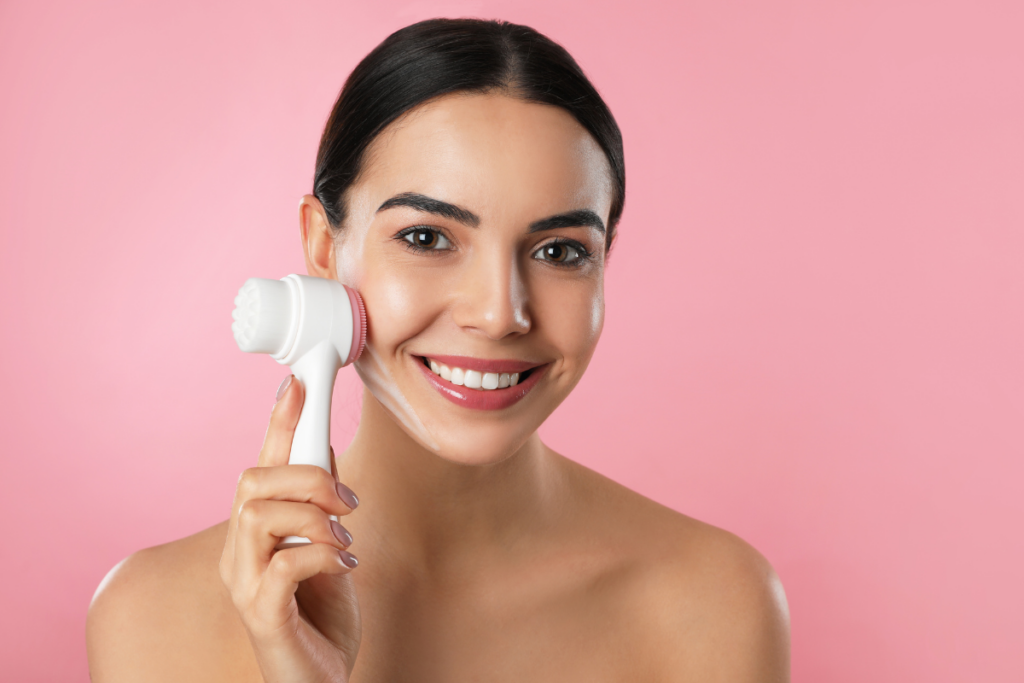
Chemical Exfoliation
Chemical exfoliants use acids or enzymes to dissolve dead skin cells and promote cellular turnover at a deeper level than physical exfoliation can achieve.
The most common chemical exfoliants include —
- Alpha Hydroxy Acids (AHAs) — AHAs, like glycolic and lactic acids, are water-soluble and work on the skin’s surface. They are ideal for dry or sensitive skin as they gently exfoliate while hydrating.
- Beta Hydroxy Acids (BHAs) — Salicylic acid is the most common BHA. It is oil-soluble and penetrates deep into the pores, making it great for acne-prone or oily skin.
- Enzymatic Exfoliants — These contain natural enzymes, often derived from fruits like papaya or pineapple, that gently break down dead skin cells without harsh chemicals. They are typically suitable for sensitive skin types.
You can also find masks or scrubs that offer both chemical and physical exfoliation.
Many products containing these ingredients can be bought and used in the home. However, stronger chemical peels are best used in a professional environment.
In some ways, chemical exfoliation is more effective than physical exfoliation because it works at a deeper level without the need for manual scrubbing.
Unfortunately, this means you should be more careful with them, especially at first. Some may cause serious irritation for people with sensitive skin, and they aren’t all suitable for all skin types.
You also have to consider how much is too much. While you shouldn’t over-exfoliate with any method, chemical exfoliation has a higher chance of causing dry, irritated skin when done too often. It can also cause your body to overcompensate by producing more sebum, leading to clogged pores and breakouts.
But with a little experimentation or professional recommendations, finding the right combination and frequency to give you healthy, beautiful skin shouldn’t take long.
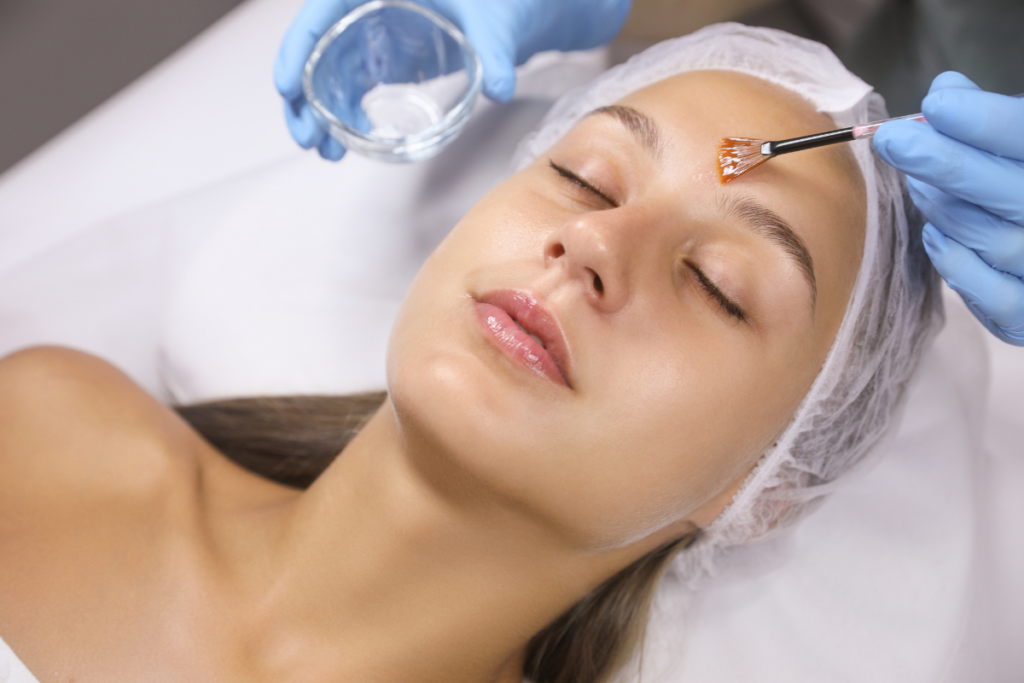
Safe Exfoliation Practices
Since there are several types of exfoliation and numerous products and devices, you must exfoliate safely.
You should tailor your facial exfoliation practices to your skin type and needs. Jumping into harsh exfoliants or daily use can seriously damage your skin, even if it is otherwise healthy.
First, knowing your skin type often determines how often you can exfoliate and what methods work best for you.
Exfoliation According to Skin Type
- Oily or Acne-Prone Skin — You can typically exfoliate 1–2 times per week with a BHA and 2-3 times a week with a gentle scrub or clean brush. (Make sure you sanitize your cleansing and exfoliating brushes, cloths, and devices as much as possible. This is important for everybody, but it is especially vital when you have acne-prone skin!)
- Dry or Sensitive Skin — Limit exfoliation to 1–2 times per week, especially at first. Ensure physical exfoliants are extra gentle, and choose lower-concentration AHAs or enzymatic solutions to avoid irritation.
- Normal or Combination Skin — Exfoliate 2–3 times per week with either a physical or chemical exfoliant, depending on your skin’s needs.
- Rough or Mature — While mature skin can be rougher or require more intense exfoliation, it can also be more delicate and sensitive. Most people with rough or mature skin can exfoliate 2-3 times per week using gentle scrubs and AHAs, but we recommend starting slower. Or, you can remove the guesswork and get a VISIA scan and recommended treatment plan from your aesthetician.
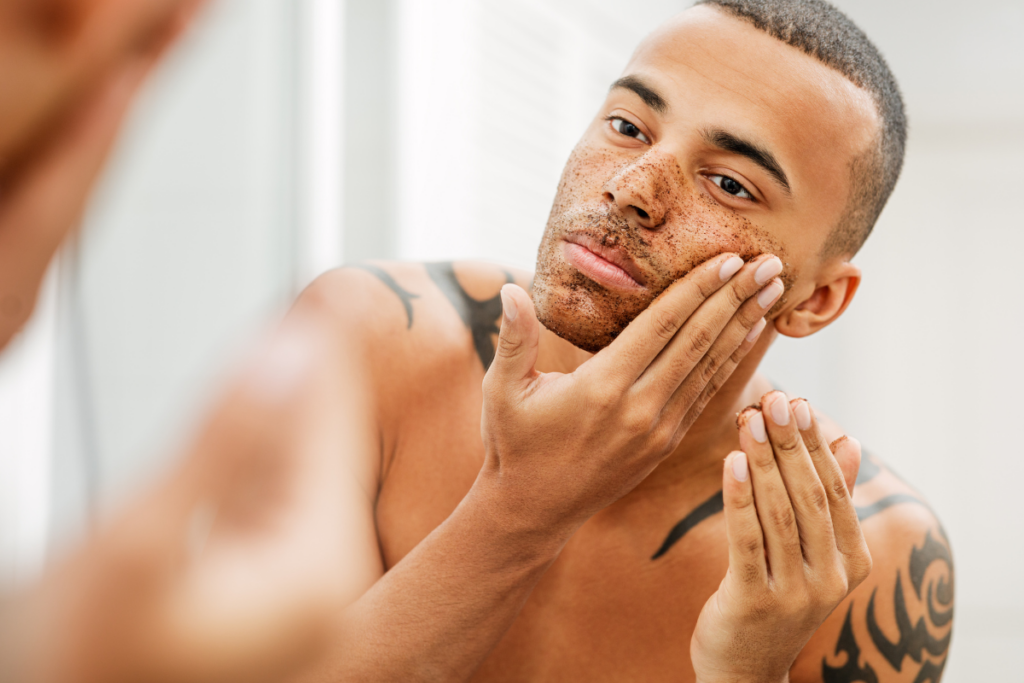
Other Important Things to Know
No matter your skin type, it’s always important to avoid harsh physical exfoliants. Scrubs containing large or rough particles (like sharp crushed walnut shells) do more damage than good. They create micro-tears that can cause irritation and even infections. Instead, opt for products with finely ground particles.
Although they are safe for your skin, consider avoiding scrubs containing plastic microbeads, as these negatively impact our water systems and oceans.
In addition to the many eco-friendly alternatives available, you can also make your own physically and chemically exfoliating DIY scrubs using ingredients you already have in your kitchen. Look for recipes that contain natural and skin-beneficial ingredients such as oils, honey, aloe vera, yogurt, sugar, salt, and coffee grounds.
Another helpful tip is to cleanse your face before exfoliating. While many products will do both, you avoid the risk of rubbing dirt or debris into your pores by using a gentle cleanser first. Chemical exfoliants will also work significantly better on freshly cleansed skin.
Finally, safe exfoliation means being careful and not overdoing it. We tend to think that the harder we scrub or, the more often we apply serums, the better our skin will be. But over-exfoliation will have the opposite effect. It can cause redness, dryness, sensitivity, and even breakouts.
Instead, start slowly and gently before increasing the frequency or intensity of exfoliating products.
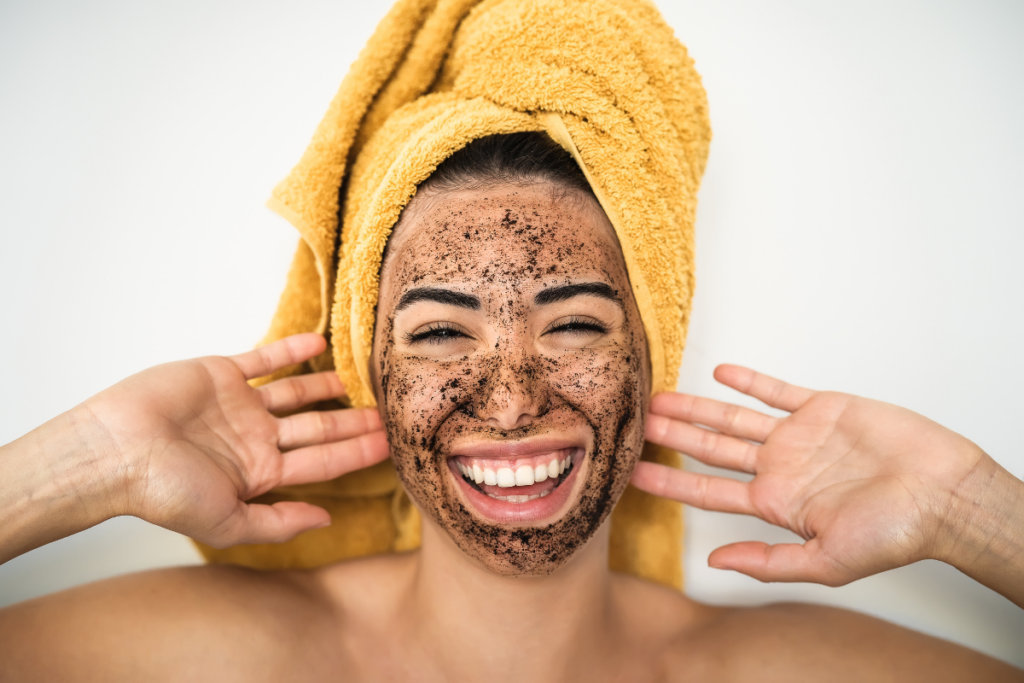
How to Take Care of Your Skin After Exfoliation
After exfoliation, your skin is more sensitive and prone to irritation. Therefore, following up with proper aftercare to protect and nourish your skin is crucial.
- Hydrate — It’s always important to replenish moisture after cleansing and exfoliating. Use a gentle, hydrating serum and moisturizer immediately after exfoliating to lock in moisture and soothe the skin.
- Apply Sunscreen — Exfoliating removes the outer layer of dead skin cells, making your skin more vulnerable to sun damage. Apply a broad-spectrum sunscreen with SPF 30 or higher after exfoliating, even if you stay indoors, as UV rays can penetrate through windows.
- Use Soothing Products — Avoid using harsh ingredients like retinoids or strong acids after exfoliating, as they can irritate freshly exfoliated skin. Instead, opt for soothing ingredients like aloe vera, chamomile, or hyaluronic acid to calm the skin.
- Avoid Heavy Makeup — Your skin needs time to breathe and recover after exfoliation. If possible, don’t apply heavy makeup for a few hours to let your skin fully benefit from the exfoliation process.
If you’ve had a professional exfoliating treatment, your technician will give you more specific aftercare instructions and product recommendations based on your skin’s needs.
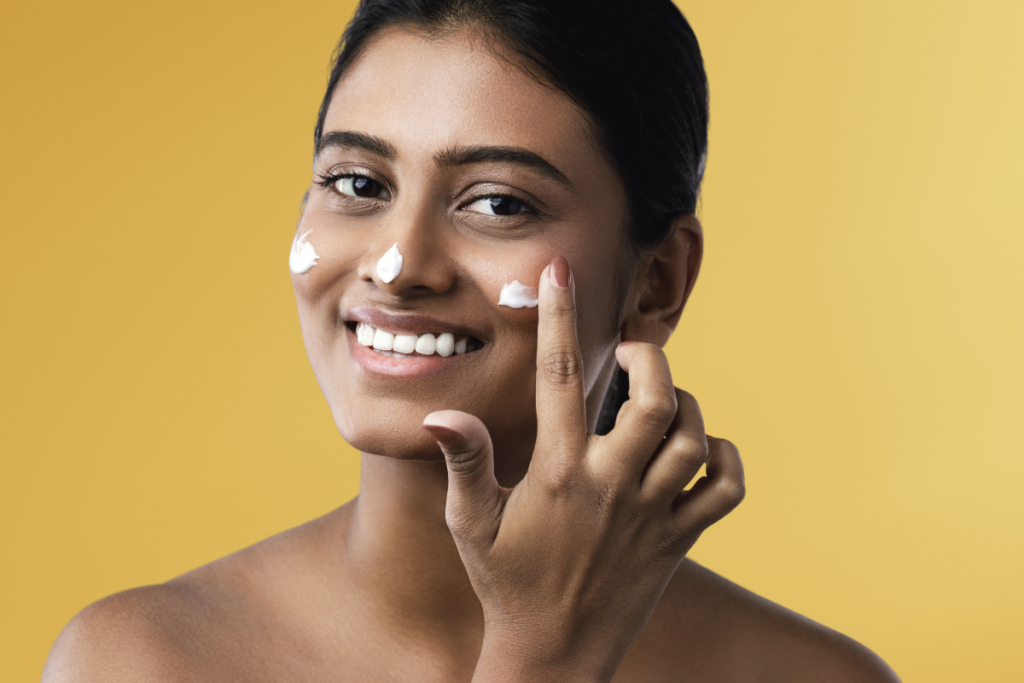
Exfoliation is Your Friend
Face exfoliation is a key step in maintaining healthy, glowing skin, especially when you find the right method for your skin type and follow safe practices.
By using appropriate methods and taking care of your skin afterward, you can enjoy a smoother, brighter complexion without irritation or sensitivity.
With the right approach, exfoliation can transform your skin, helping you achieve a fresh, radiant glow year-round.

